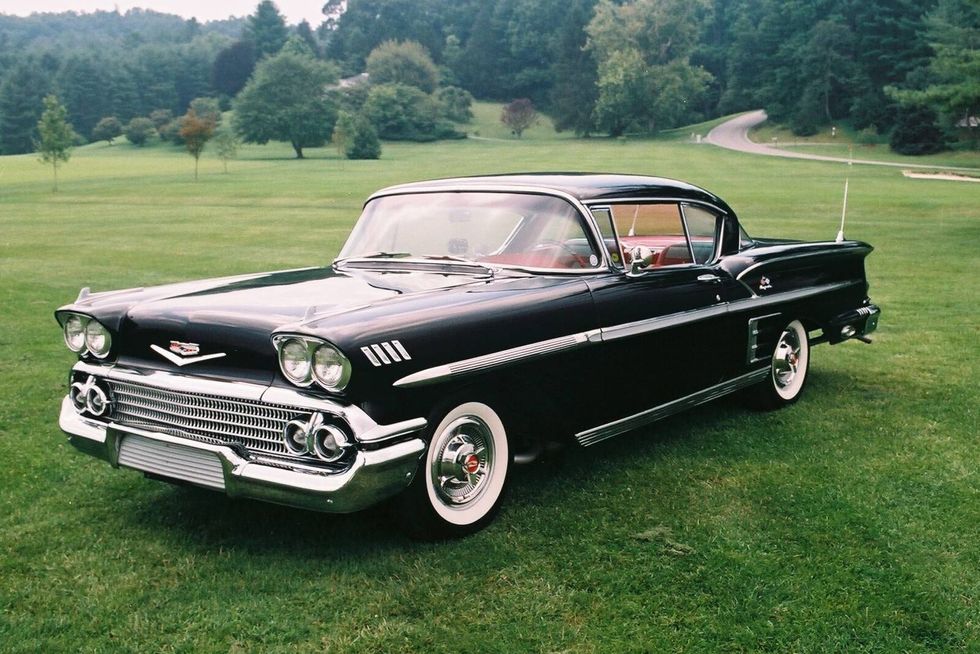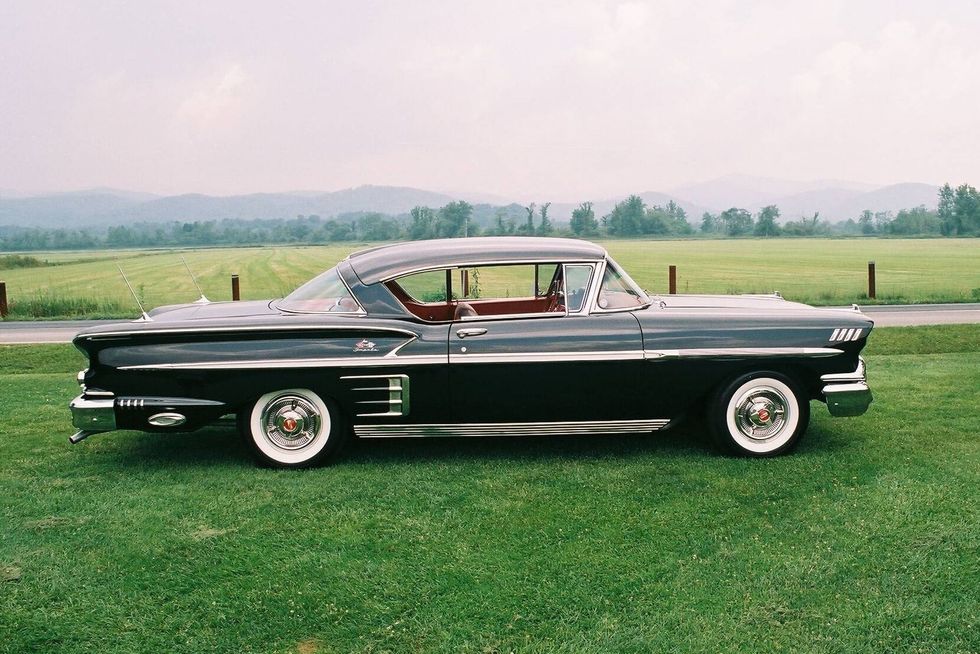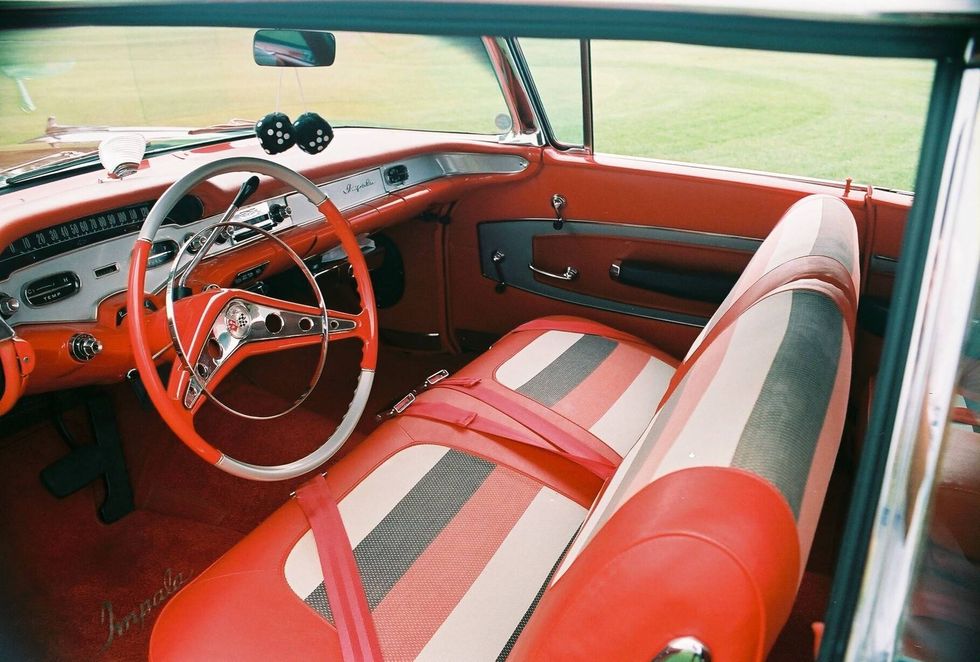
Buy
Resources
Entertainment
Magazine
Community
In This Article
Category:
Car Culture
Jerry Sneva at Indy, 1977. Photos courtesy IMS.
Born into a racing family, Jerry Sneva climbed the ladder from Spokane, Washington's dirt tracks all the way to the Indianapolis Motor Speedway. In 1977, Jerry's debut year at the Brickyard, he qualified 16th but fought his way to 10th by the checkered flag, a performance that earned him Rookie of the Year honors. Jerry Sneva would make the show four more times, though without achieving the same success as in his first Indy 500. On January 29, Jerry Sneva died in Indianapolis, age 68.
Older brother Tom Sneva made his debut at Indy in 1974, and Jerry attempted to qualify for the 500 one year later, in 1975. Though unsuccessful after a crash forced him to swap cars at the last minute, the younger Sneva did pass his rookie test, thanks in part to an official who may have overlooked the expired time clock. Jerry sat out the 1976 race, but returned to Indy in May 1977.
By then, Jerry was a veteran driver, with experience piloting supermodifieds in the Canadian-American Modified Racing Association (CAMRA), as well as USAC Sprint Cars. In his 1973 USAC debut, substituting for his absent brother Tom (who was busy qualifying for a California Indy Car race), Jerry qualified for the main in Carl Gelhausen's rear-engine sprint car and managed to achieve a second-place finish in the ill-handling beast.
With Warner Hodgdon's turbocharged AMC at Indy in 1979.
At Indy in 1979, a mechanical issue sidelined the car Sneva was supposed to drive on the third day of qualifying. Asked to shakedown the turbocharged AMC reserved for Neil Bonnet - who planned on flying in to qualify at Indy after qualifying for the NASCAR race at Dover - Sneva was happy to offer his assistance to team owner Warner Hodgdon.
The plan was to go to the end of the qualifying line, take three warmup laps, and then pull in off the track before the green flag waved for a timed lap. A session complete, Sneva provided good feedback for the team, which made changes to the car’s setup. A second session followed, though it didn’t end as anyone expected.
Carrying a substantial amount of speed off turn four, Sneva took the green flag instead of returning to the pits, flying through four qualifying laps at an average speed of 184.379 MPH, good enough to put him 21st on the grid, well outside the danger of being bumped on “Bubble Day.” Part of Sneva’s performance was bravado, but part of it was also self-preservation – the car’s throttle had stuck in the open position, forcing Sneva to drive it with the kill switch instead of the more conventional gas, clutch, and brake pedals.
Sneva later admitted there was strategy behind his move. Staying out with a stuck throttle was risky, but returning to the pits to hope his original car was repaired in time to qualify was riskier. Though the turbocharged AMC had been assigned to Bonnett, the rising NASCAR star was a rookie at the Brickyard, while Sneva was a veteran. Qualifying, particularly with such an impressive performance, increased the likelihood that Sneva would be awarded the seat once reserved for Bonnett.
Bad weather kept Bonnett in Delaware for the weekend, ultimately giving the seat in Hodgdon’s car to Sneva. His 1979 Indy 500 would be a short one, however, as just 17 laps into the race, his engine let go. In 1980, Sneva qualified fifth on the grid, in the middle of the second row, but a crash in turn one on lap 131 relegated him to a 17th place finish. He failed to qualify in 1981, and in 1982 – his last Indy 500 – Sneva qualified 28th and crashed on lap 62, ultimately scoring a 23rd place finish.
Jerry would ultimately start 28 Indy Car races over his career, achieving six top-10 finishes despite his inability to procure a truly competitive ride. After relocating to Indianapolis, Sneva became a regular visitor to the Indianapolis Motor Speedway, and a frequent sight in its museum and gift shop.
Sneva is survived by his wife, Kathy; son, Trevor; and daughter, Shelby, as well as brothers Tom, Blaine and Jan.
Recent
For 1958, all-new styling at every General Motors passenger-car division ushered in big changes, just as the corporation was celebrating its 50th anniversary. It was also the final year with Harley Earl at the helm of GM design. Though the new models were longer and lower in proportion than in previous years, Earl’s signature use of excessive chrome remained unabated. That brightwork continued a trend that had dominated automotive design throughout the Fifties. For 1958, it worked seamlessly with those new designs that presented a broad departure from previous years.
Currently listed on Hemmings Auctions are a pair of faithfully restored hardtop coupes from the GM catalog from that momentous year. With wide chrome grilles surrounding four headlamps and copious brightwork including side trim the length of the body, this 1958 Chevrolet Impala Sport Coupe and 1958 Pontiac Bonneville Sport Coupe both handsomely display the heavily Earl-influenced styling that made headlines for GM.

1958 Pontiac Bonneville Sport Coupe
While GM made general announcements and events around its 50th anniversary for 1958, only Pontiac incorporated the occasion into its advertising. It mattered little that the first Pontiac rolled off the assembly line in 1926 as sub-brand of Oakland. Laid out in large letters in its brochure, Pontiac’s advertising theme for 1958 carried the tagline “The boldest advance in fifty years,” also declaring “A new kind of cars is born!” Previously introduced as a well-optioned convertible version of the Star Chief in 1957, the standalone Bonneville arrived for 1958.
Promising “the first true union of sport car action with town car luxury,” the Bonneville was only produced as a pillarless hardtop Sport Coupe or a drop-top Sport Convertible for 1958. As “a modern ultimate for the man who loves cars…this steel-muscled road machine,” the Bonneville featured a 370-cu.in. V8 engine with a four-barrel carburetor and 10:1 compression as standard equipment. An optional Tri-Power setup with triple two-barrel carburetors was given the “Tempest 395” moniker for its 395 lb-ft torque rating.

As the late 1950s was peak Jet Age, aeronautical and rocket themes pervade the details of the Bonneville. The leading edge of the scalloped rear quarter panels featured a very rocket-like piece of chrome trim that extended to a point at the front of the car. On top of each front fender, just before the headlamps, sat additional chrome-plated pieces that resembled delta-wing jets with appendages that lead into creases atop the fenders like contrails from jet engines.
Finished in Burma Green with Calypso Green accents, this 1958 Bonneville Sport Coupe, one of 9,144 produced, appears to have been restored some years ago, with a fit and finish that looks to be holding up. It is equipped with the Tri-Power 370 and a four-speed Super Hydra-Matic transmission. It is additionally fitted with power windows and power brakes, along with the rare Trans-Portable radio unit that can be removed and used as a portable radio with its built-in speaker and ability to run off batteries. The seller notes no problems with the drivetrain and asserts that the transmission shifts well.

1958 Chevrolet Impala Sport Coupe

Chevrolet didn’t revel in the golden jubilee news that Pontiac touted, but its advertising in 1958 suggested that its redesigned models were “Almost too new to be true!” The ad copy also promised that “You’ll like being looked at in your beautiful ’58 Chevrolet.” Longer, lower and wider than the famous “Tri-Five” models that preceded it, the Chevrolet models somewhat mirrored what was going on at Pontiac, but with a rear-end treatment that seemed to show the previous year’s tall tailfins flopped over somewhat. In magazines ads, the words accompanying the first-year Impala Sport Coupe suggested “This sleek styles-setter promises action, gaiety, glamor—and it keeps its promises beautifully.”
Like the Bonneville nameplate, the first Chevrolet to wear the Impala badge arrived in 1958. Chevy also introduced its first big-block V8, the so-called “W” engine. For 1958, Chevrolet dubbed this 348-cu.in. engine the Turbo-Thrust V8 when equipped with a four-barrel carburetor and Super Turbo-Thrust when fitted with Tri-Power triple carburetion. Though it lacked the aviation/space themes of the Bonneville’s styling, the similarly proportioned Impala was also festooned with plenty of brightwork, from the wide grille to side spears that ran nearly from the taillights to the headlamps. Pound-for-pound, the massive wraparound bumpers probably contained the highest amount of chrome on the car.

Finished in Onyx Black with a bold Rio Red-dominated interior, this 1958 Chevrolet Impala Sport Coupe now on Hemmings Auctions features a long-term restoration that spanned the 1990s. Completed in 2001, it appears to be holding up well. The photos of the very clean undercarriage that accompany the listing tell a story that the car has been taken care since that redo. This example is fitted with the four-barrel 348 that was rated at 250 horsepower when new. Power reaches the rear axle via a two-speed Powerglide automatic transmission.
GM made some distinct design changes for 1958. With plenty of models across five passenger-car divisions, we are fortunate to have options in the collector car hobby when it comes to these chrome-laden machines. Which of these ’58 hardtop coupes would you like to cruise in?
Head on over to Hemmings Auctions to take a look and let us know.
Keep reading...Show Less
A 1972 Ferrari 246 GT Dino fire survivor is listed for sale online, and it could be the cheapest Ferrari Dino to hit the market in a long while. Would you pick it or kick it?
The hood, which still opens to reveal a 2.4-liter V-6 engine that looks to be salvageable, sports a gaping hole where the flames ate through the steel. The tail and rear quarter panels reflect the front ends condition, and surface rust covers the entire car. Everything that the fire could melt away is gone, including the interior. At one time, the sports car was beautifully upholstered with tan leather and coated with Marrone Colorado brown paint. Now the brown paint is replaced by surface rust covering most of the car. It reportedly was all-original before the fire.
Remember when a crashed Ferrari 500 Mondial sold for nearly $2 million at auction last year? Well, this Dino admittedly isn’t nearly as valuable, nor does it have a racing history, but its final sale price could still surprise you.
“This car clearly needs complete restoration, but the good news is that it's certainly the cheapest one you will ever find,” Gullwing Motor Cars writes, adding, “The Dino market is hot and shows no signs of cooling… This deal is on fire!”
Ferrari created the Dino 246 GT for the 1970 model year to replace the prior 206 GT model. The 246 GT received an increased engine displacement to 2.4 liters, still paired with a five-speed manual transmission. While the 206 GT body was built primarily from aluminum, the 246 GT switched to mostly steel bodywork, which happens to have a higher heat resistance.
Production of the Dino 246 GT ended in 1974 with around 2,295 models built. Just over 3,700 total were built if you factor in the 1,274 GTS models produced. At the time, it was the most examples that Ferrari had ever built of any its models.
According to Conceptcarz.com, a 1972 Ferrari 246 Dino could sell for anywhere between $375,00 and $627,000 in perfect condition, between $280,000 and $375,000 in excellent condition, from $165,000 to $280,000 in good condition, and $48,400 to $165,000 in fair condition. The lowest recorded sale is $48,400 (sale date unavailable) while the highest sale so far reached to $627,000 back in 2014.
Keep reading...Show Less














